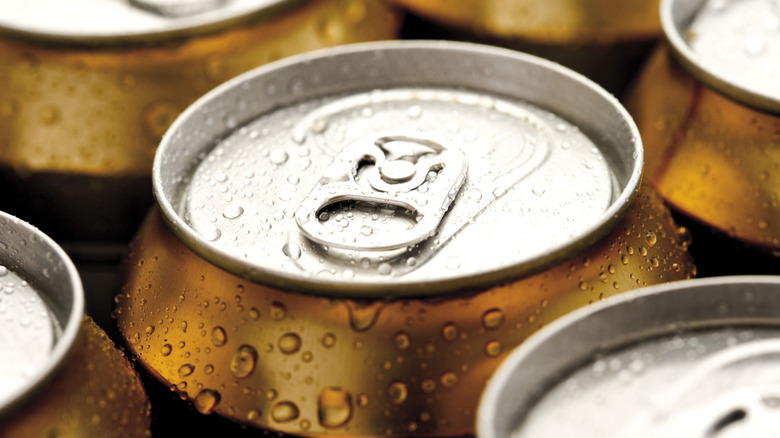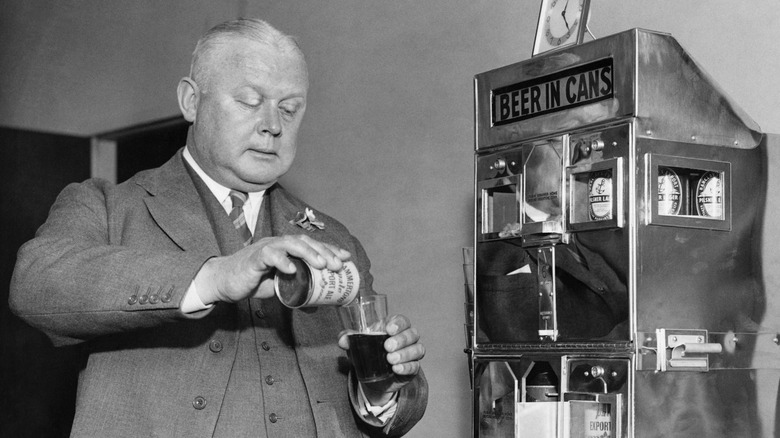Why It Took Over 100 Years To Put Beer In A Can
The act of popping open a can of beer and having it taste how the brewer intended it to is a pretty ubiquitous experience today, but it wasn't always this way. Canning vegetables and other non-carbonated products first began in the early 1800s thanks to the work of the French candy maker Nicholas Appert, known as "the father of canning," who developed a method of safely storing perishable food for long periods in hermetically sealed containers that had been sterilized by heat. It took a lot longer to come up with a workable can for beer — a lot longer. Someone even managed to can bacon before the invention of canned beer.
One of the biggest problems involved in canning beer was creating a metal container that could withstand the high pressure of a carbonated beverage. Where canned vegetables or juices only need to withstand between 25 to 35 pounds of pressure per square inch (psi) beer (and other carbonated beverages) need to withstand more than 80 psi. Early experiments with canning beer produced explosive results. The second issue was taste. Beer stored in unlined metal cans ruined the beer's flavor. Both problems were eventually solved by lining the metal. Over the years, the metal of choice went from tin to steel to aluminum by the late 1950s.
Why can beer in the first place?
Bottled beer has been around since the mid 1500s when the process was first developed in England, but, for brewers, there were a few downsides of using glass for their products. Glass is fairly heavy, which means shipping it can be expensive. Then there's the problem of light getting in and turning the beer skunky. How does that work? A chemical reaction occurs when light interacts with the beer's alpha acids, a chemical found in hops, that then produces off flavors. Metals like aluminum are lightweight and opaque, making them good materials to hold beer. The American Can Company, headquartered in New York City, first began trying to develop a metal beer can in 1909 but had early failures before being sidelined by Prohibition, which lasted from 1920 to 1933.
By 1934 the company had perfected its container, which was made from tin, by lining it with a vinyl resin called Vinylite. This resin-lined tin prevented the beer from picking up any off-putting tastes from the metal and kept the cans from bursting. In January 1935 the American Can Company worked with the Gottfried Krueger Brewing Company of Newark, New Jersey to produce 2,000 cans of Krueger's Finest Beer and Krueger's Cream Ale, which they shipped to Richmond, Virginia as a test case. The new canned beer was received with an overwhelmingly positive response. The next year, two of the big boys of the brewing industry — Pabst and Schlitz — introduced their own canned beer and the industry ran with it.

